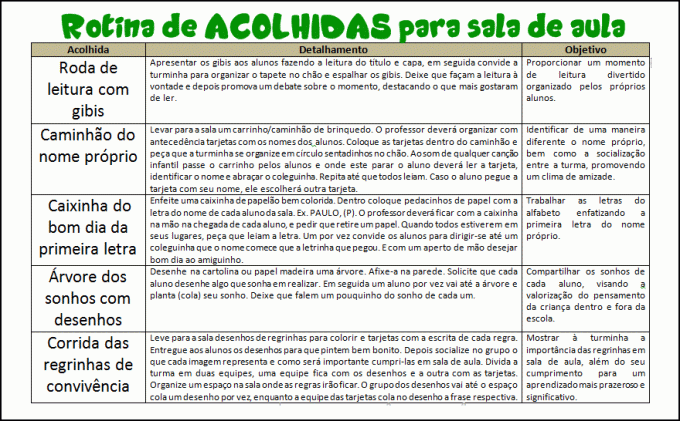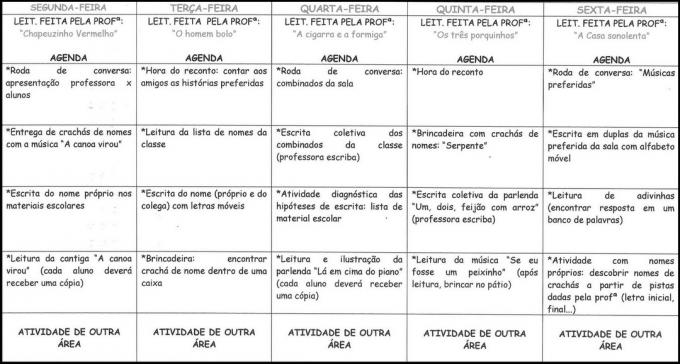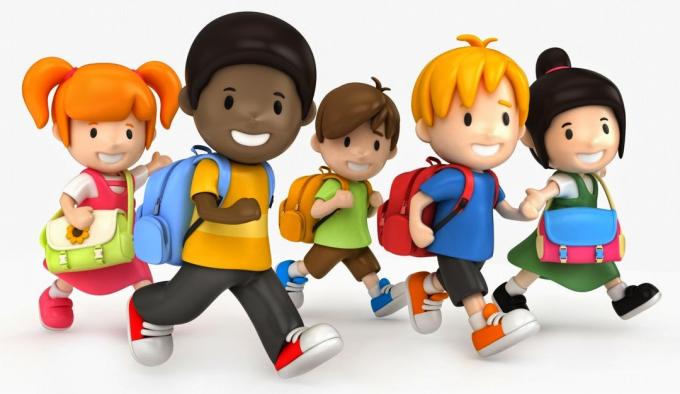
In this post we selected tips and suggestions for your Routine for the first week of school.
Organizing school activities with children and teenagers is a somewhat complex task. It can sometimes seem difficult to keep students focused and motivated on the tasks they need to do.
See too:
THE school routine it is the sequence of activities that a student develops while at school. At first glance, it may seem unnecessary to plan this sequence in advance, but it is important that it be well thought out. If the routine is organized, it is easier to ensure that students complete their tasks and that the teacher can achieve the desired educational goals.
The planning of a school routine should start from the principle that some moments must be repeated periodically. With a well-defined and stable daily life, the student feels more secure and develops their autonomy, which contributes to the smooth running of the proposed activities and leads to an improvement in teaching as a whole.
Index
A clean school is very different
She is beautiful and is good for us
if you're clean you're smart
Everyone will want you around
Be careful
look at cleaning 2 times
a clean school
It's always a beauty.
The head is a square,
the mouth a banana,
the nose a fork,
an eye is a coconut,
the other a button,
the neck is a ladder,
the belly a pillow,
an arm an umbrella,
the other a spoon,
a leg is a heavy object,
the other a light object. Etc…
Once upon a time there was a forest where all animals lived in peace.
At dawn on a certain day, all the animals started to run away from a great fire.
Behold, at that moment, a very strange scene happened.
A hummingbird flew from the waterfall to the fire, carrying drops of water in its small beak, trying to calm the great fire.
The elephant, admired with such courage, arrives and asks the hummingbird:
– You hummingbird, are you going crazy? Can't you see that you won't be able to put out this fire with droplets of water? Escape while there is still time!
And the hummingbird responds:
- I know that putting out this fire is not my problem alone. I'm just doing my part! This forest is my home, and you don't leave a home until you fight to save it!
I also recommend: Suggested Back-to-School Dynamics

Source: Posted by teaching with love Professor Valeria:
Also see: How to make classes more dynamic in Early Childhood Education



The organization of time is one of the biggest challenges in providing children with quality care and education. Every moment of life in preschool should be a time full of stimuli, challenges and opportunities to learn. For this to happen, it is essential to plan the activities of each day well, in the context of a weekly or monthly work plan.
Below are 9 essential steps of Routine for the first week of school:
This is the most important part of a child's day in preschool. Once the difficulty in separating from the parents is overcome, the child learns that he is welcome. Who receives it, how it is received by adults, teachers and peers sets the tone of the day and their perception of preschool life. Arrival is also the time to form important habits: locating and storing objects, putting on and taking off clothes, tying and untying shoes. The child must acquire autonomy in these matters within the first few weeks. The presence of an adult is essential to guide the formation of habits and sequences, as well as to encourage the child to progressively become autonomous.
There are two most common ways to start the day: in some schools, the child goes to the classroom and has freedom to do what you want or you can play on the patio, even organize some activity; in others, the children go directly to an activity organized by the teacher. This activity can be the usual wheel, or something the teacher has prepared to engage the children directly in it. The most common is the wheel, and there are several forms and schedules for it, among which we highlight:
Snack time is a privileged time for the formation of hygiene and health habits, organization, social behavior and psychomotor skills. But it is, above all, a privileged time for an adult-child interaction very similar to life at home. The possibility for the teacher to sit with the children and talk in a free and relaxed way should be seen as a unique moment.
In a dynamic school where the child has varying degrees of freedom to come and go and choose tasks and friends, recess is not much different from other moments in preschool. The existence of adequate spaces and equipment and the presence of other adults can also help a lot in the development of social behaviors. Ensuring children's safety must be a primary concern, and like everything else in safety, prevention is always the best medicine.
rest
Children vary greatly in their need for rest and the length of rest. Needs tend to reduce over time, but like any habit, rest must be anticipated and nurtured. The school may decide whether children who are not in the habit of sleeping should remain quiet while resting or if they can participate in other activities. Furthermore, there are times when the child needs time and isolated space to recover.
There are several important questions regarding these themes.
The farewell must be preceded by a review of the day. This helps children develop a sense of planning, predictability and stability. It also helps in developing memory and organizing narrative structures. Before the end of the day, there are precautions to be taken into account:
Depending on available resources, children can have time to do whatever they want in different spaces in the room. If this is possible, the teacher must ensure that the children circulate in the various spaces on different days, to prevent them from always doing the same thing. This is usually done by forming pairs or cracks and encouraging children to play together. These are important moments for children to develop their individuality, learn to play in groups of two, three or more; and they are precious moments for the teacher to observe the children and engage in real conversations around the activity the children are doing. Real conversation means long dialogues, in which the teacher encourages the child to elaborate their thoughts, feelings, explain the action, etc. It's the opposite of doing quizzes with questions and answers or giving orders.
Each day the teacher will organize two, three or four activities, using the available materials. The activities must be planned in a spaced way, but they can be sequential: for example, the teacher you can read a children's story and then do an activity or a drawing on the text. read. Careful preparation for each activity should be done as this eases the transition and helps children focus on what they are about to start doing.
More in: Classroom presentation dynamics with students
Subscribe to our email list and receive interesting information and updates in your email inbox
Thanks for signing up.


